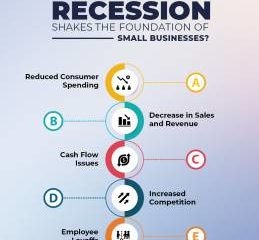Politics
Steps to Writing an Essay: A Guide to Writing Outstanding Essays
Published
9 months agoon
By
Drew Simpson
College and university students must possess strong essay-writing skills to achieve their academic goals. Instructors assess an individual’s mastery of the subject matter by how well they tackle essay prompts. Besides, essays demonstrate how well a student can communicate the knowledge they acquire to others, which determines the overall score.
Many learners across different academic levels admit that writing a good essay is not as easy as it sounds. However, that shouldn’t be the case if you have a better understanding of the steps to writing an essay.
Always remember that an essay must follow a specific structure. Therefore, you should strictly follow the instructions, fulfill structural requirements, and accurately answer the essay prompt. Carefully read the step-by-step guide below to help you master the essay writing process.
5 Essential Pre-Writing Steps for Writing an Essay
Choose an appropriate topic
One of the essential essay-writing steps is selecting an appropriate topic. Before you rush to start writing, ensure you select a topic that you are passionate about and one that interests you. As a result, the research and writing process will be fun, helping you draft an outstanding paper.
Understand the topic
In some cases, your instructors might give you an essay prompt. In such a case, begin by critically analyzing the topic to ensure you fully understand what you should write. It is one of the most critical steps in writing an essay since it creates the foundation of the entire writing process.
Brainstorm ideas and arguments
Once you are confident about the topic you are writing about, determine the main idea and write down the arguments you want to put across to support your main idea. Professionals from essay writing service advise you to consider counterarguments at this stage since they will help you determine the most vital points to convince your readers to support your point of view.
Research credible evidence
After identifying the arguments to include in your essay, proceed to research external resources that you will use to give credibility to your point of view. Remember that academic papers require high-quality resources that are reputable, credible, and whose information is reliable. Examples of such sources include:
- Journals
- Books
- Government websites
- Peer-reviewed articles
Create an outline
An outline will help you to organize your thoughts. You will decide which arguments you should present first. You will also determine which points are stronger than others and how well you transition from one point to the other. If you are writing an argumentative essay, you will understand how to logically present arguments and counterarguments to persuade your readers to support your point of view.
The 5 Essay Writing Steps You Should Follow
Write your initial draft
It is the first step in the actual writing process. At this stage, you should consider all the structural requirements to ensure your essay meets the anticipated standards. However, you shouldn’t be worried so much about formatting errors, grammatical mistakes, or even spelling since the key objective of this stage is to put your ideas on paper. Follow your outline to ensure you cover every argument as planned.
What you should include in your initial draft
- Introduction: A formal essay must begin with an introductory paragraph that provides your readers with a birds-eye view of what you have discussed in your essay. The introduction should give background information to introduce your readers to the topic. Most importantly, it should contain a thesis statement communicating your main idea.
- Body paragraphs: The body paragraphs contain the arguments and counterarguments you present to your readers that support the main idea. Remember that every body paragraph contains one idea. As you write the body paragraphs, it is advisable to keep referring to the thesis statement to ensure each point you discuss is relevant and contributes to the argument. A standard body paragraph should contain the following:
- Topic sentence: It communicates the main point discussed in the paragraph.
- Evidence 1: Supporting evidence from a reputable source. It should be cited appropriately according to the required formatting style.
- Evidence 2: Counterargument or supporting evidence to reinforce evidence 1.
- Your argument: This is the sentence that contains your point of view. What you want your readers to support.
- Linking sentence: t links what you have discussed with the concluding sentence.
- Conclusion: Summarize what you have discussed and reaffirm the topic sentence.
- Conclusion: A conclusion is significantly important since it leaves a lasting impression on the reader. You should carefully write the paragraph to summarize the points you have discussed as well as restate the thesis statement in different words. Also, ensure that your conclusion helps the reader understand why they should support your point of view.
Proofread and edit
This is among the most important post-writing steps of writing an essay since it ensures you deliver high-quality papers. At this stage:
- Make sure you identify and correct grammatical, formatting, and spelling errors.
- Ensure that your sentences and paragraphs are correctly structured. Check for errors such as sentence fragments and cliches among others. Also, ensure each paragraph contains only one idea.
- Ensure you have used appropriate words and vocabulary. Read your paper to confirm that you haven’t used jargon, informal words, sensitive language, outdated words, etc. This will ensure you deliver an exceptionally high-quality paper.
Most students find this proofreading and self-editing challenging. If you feel the same, you can request your colleagues help. Otherwise, you can seek the services of professionals who could do it at a fee. Moreover, you can use free or paid online tools such as Grammarly. Whichever option you choose, ensure the final paper is flawless. Remember, errors impact readability, lowering the quality of your paper.
Ensure you fulfilled all the requirements
The last of the steps for writing an essay is ascertaining that you haven’t omitted any instruction. Countercheck your essay against the instructions. For instance:
- If you were to write a persuasive essay, did you provide a logical argument to prove why your idea is superior? If it is an informative essay, did you include factual, verifiable, and retrievable data?
- Check whether you followed the structural requirements. For instance, ask yourself the following questions: did I meet the word count? Did I use the required fonts and font size? What about the spacing? Did I follow the formatting style requirements, such as in-text citation, title page, and references?
- Finally, ensure that your paper is plagiarism-free. While proper paraphrasing and citing help you avoid plagiarism, running your final work on a plag-checker is advisable to ensure it’s 100% unique.
Verdict
Whether you are writing a narrative, argumentative, or informative essay, you must fulfill the structural requirements and all the instructions to deliver a quality paper that guarantees high grades. This detailed guide provides the steps you should follow to write an exceptional paper. Before starting your initial draft, you should prepare to ensure the writing process is smooth and logical. Once you finish your paper — take time for the post-writing activities to ensure you deliver a flawless and high-quality essay.
Featured Image Credit: Pexels; Thank you!
Deanna Ritchie
Managing Editor at ReadWrite
Deanna is the Managing Editor at ReadWrite. Previously she worked as the Editor in Chief for Startup Grind and has over 20+ years of experience in content management and content development.
You may like
-


Your guide to talking about climate tech over the holidays
-


3 Steps to Ace Campus Recruitment with Skill Test
-


Building Responsive Layouts for iOS Apps: A Step-by-Step Guide
-


A Guide to Grow Your Tech Startup
-


Adapt, Innovate, Succeed: A Guide To Recession-Proofing Your Small Business
-


Artificial Intelligence in Legal Practice: A Comprehensive Guide
Politics
Fintech Kennek raises $12.5M seed round to digitize lending
Published
7 months agoon
10/11/2023By
Drew Simpson
London-based fintech startup Kennek has raised $12.5 million in seed funding to expand its lending operating system.
According to an Oct. 10 tech.eu report, the round was led by HV Capital and included participation from Dutch Founders Fund, AlbionVC, FFVC, Plug & Play Ventures, and Syndicate One. Kennek offers software-as-a-service tools to help non-bank lenders streamline their operations using open banking, open finance, and payments.
The platform aims to automate time-consuming manual tasks and consolidate fragmented data to simplify lending. Xavier De Pauw, founder of Kennek said:
“Until kennek, lenders had to devote countless hours to menial operational tasks and deal with jumbled and hard-coded data – which makes every other part of lending a headache. As former lenders ourselves, we lived and breathed these frustrations, and built kennek to make them a thing of the past.”
The company said the latest funding round was oversubscribed and closed quickly despite the challenging fundraising environment. The new capital will be used to expand Kennek’s engineering team and strengthen its market position in the UK while exploring expansion into other European markets. Barbod Namini, Partner at lead investor HV Capital, commented on the investment:
“Kennek has developed an ambitious and genuinely unique proposition which we think can be the foundation of the entire alternative lending space. […] It is a complicated market and a solution that brings together all information and stakeholders onto a single platform is highly compelling for both lenders & the ecosystem as a whole.”
The fintech lending space has grown rapidly in recent years, but many lenders still rely on legacy systems and manual processes that limit efficiency and scalability. Kennek aims to leverage open banking and data integration to provide lenders with a more streamlined, automated lending experience.
The seed funding will allow the London-based startup to continue developing its platform and expanding its team to meet demand from non-bank lenders looking to digitize operations. Kennek’s focus on the UK and Europe also comes amid rising adoption of open banking and open finance in the regions.
Featured Image Credit: Photo from Kennek.io; Thank you!
Radek Zielinski
Radek Zielinski is an experienced technology and financial journalist with a passion for cybersecurity and futurology.
Politics
Fortune 500’s race for generative AI breakthroughs
Published
7 months agoon
10/11/2023By
Drew Simpson
As excitement around generative AI grows, Fortune 500 companies, including Goldman Sachs, are carefully examining the possible applications of this technology. A recent survey of U.S. executives indicated that 60% believe generative AI will substantially impact their businesses in the long term. However, they anticipate a one to two-year timeframe before implementing their initial solutions. This optimism stems from the potential of generative AI to revolutionize various aspects of businesses, from enhancing customer experiences to optimizing internal processes. In the short term, companies will likely focus on pilot projects and experimentation, gradually integrating generative AI into their operations as they witness its positive influence on efficiency and profitability.
Goldman Sachs’ Cautious Approach to Implementing Generative AI
In a recent interview, Goldman Sachs CIO Marco Argenti revealed that the firm has not yet implemented any generative AI use cases. Instead, the company focuses on experimentation and setting high standards before adopting the technology. Argenti recognized the desire for outcomes in areas like developer and operational efficiency but emphasized ensuring precision before putting experimental AI use cases into production.
According to Argenti, striking the right balance between driving innovation and maintaining accuracy is crucial for successfully integrating generative AI within the firm. Goldman Sachs intends to continue exploring this emerging technology’s potential benefits and applications while diligently assessing risks to ensure it meets the company’s stringent quality standards.
One possible application for Goldman Sachs is in software development, where the company has observed a 20-40% productivity increase during its trials. The goal is for 1,000 developers to utilize generative AI tools by year’s end. However, Argenti emphasized that a well-defined expectation of return on investment is necessary before fully integrating generative AI into production.
To achieve this, the company plans to implement a systematic and strategic approach to adopting generative AI, ensuring that it complements and enhances the skills of its developers. Additionally, Goldman Sachs intends to evaluate the long-term impact of generative AI on their software development processes and the overall quality of the applications being developed.
Goldman Sachs’ approach to AI implementation goes beyond merely executing models. The firm has created a platform encompassing technical, legal, and compliance assessments to filter out improper content and keep track of all interactions. This comprehensive system ensures seamless integration of artificial intelligence in operations while adhering to regulatory standards and maintaining client confidentiality. Moreover, the platform continuously improves and adapts its algorithms, allowing Goldman Sachs to stay at the forefront of technology and offer its clients the most efficient and secure services.
Featured Image Credit: Photo by Google DeepMind; Pexels; Thank you!
Deanna Ritchie
Managing Editor at ReadWrite
Deanna is the Managing Editor at ReadWrite. Previously she worked as the Editor in Chief for Startup Grind and has over 20+ years of experience in content management and content development.
Politics
UK seizes web3 opportunity simplifying crypto regulations
Published
7 months agoon
10/10/2023By
Drew Simpson
As Web3 companies increasingly consider leaving the United States due to regulatory ambiguity, the United Kingdom must simplify its cryptocurrency regulations to attract these businesses. The conservative think tank Policy Exchange recently released a report detailing ten suggestions for improving Web3 regulation in the country. Among the recommendations are reducing liability for token holders in decentralized autonomous organizations (DAOs) and encouraging the Financial Conduct Authority (FCA) to adopt alternative Know Your Customer (KYC) methodologies, such as digital identities and blockchain analytics tools. These suggestions aim to position the UK as a hub for Web3 innovation and attract blockchain-based businesses looking for a more conducive regulatory environment.
Streamlining Cryptocurrency Regulations for Innovation
To make it easier for emerging Web3 companies to navigate existing legal frameworks and contribute to the UK’s digital economy growth, the government must streamline cryptocurrency regulations and adopt forward-looking approaches. By making the regulatory landscape clear and straightforward, the UK can create an environment that fosters innovation, growth, and competitiveness in the global fintech industry.
The Policy Exchange report also recommends not weakening self-hosted wallets or treating proof-of-stake (PoS) services as financial services. This approach aims to protect the fundamental principles of decentralization and user autonomy while strongly emphasizing security and regulatory compliance. By doing so, the UK can nurture an environment that encourages innovation and the continued growth of blockchain technology.
Despite recent strict measures by UK authorities, such as His Majesty’s Treasury and the FCA, toward the digital assets sector, the proposed changes in the Policy Exchange report strive to make the UK a more attractive location for Web3 enterprises. By adopting these suggestions, the UK can demonstrate its commitment to fostering innovation in the rapidly evolving blockchain and cryptocurrency industries while ensuring a robust and transparent regulatory environment.
The ongoing uncertainty surrounding cryptocurrency regulations in various countries has prompted Web3 companies to explore alternative jurisdictions with more precise legal frameworks. As the United States grapples with regulatory ambiguity, the United Kingdom can position itself as a hub for Web3 innovation by simplifying and streamlining its cryptocurrency regulations.
Featured Image Credit: Photo by Jonathan Borba; Pexels; Thank you!
Deanna Ritchie
Managing Editor at ReadWrite
Deanna is the Managing Editor at ReadWrite. Previously she worked as the Editor in Chief for Startup Grind and has over 20+ years of experience in content management and content development.
